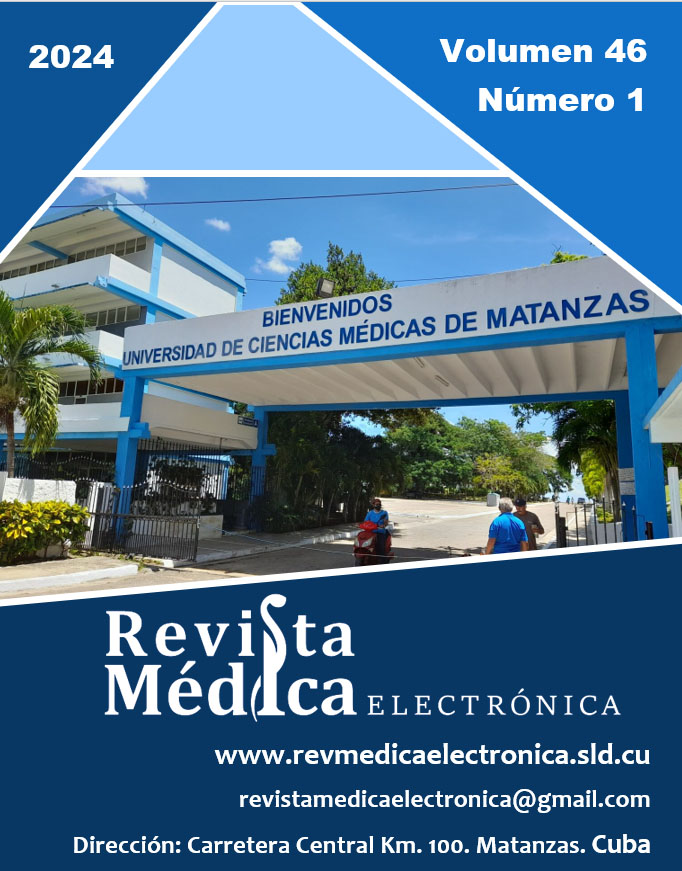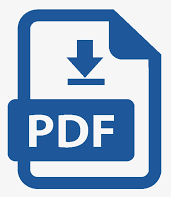Abordajes de una molestia periimplantar
Palabras clave:
implantes dentales, higiene bucal, periimplantitis, osteointegración, satisfacción del pacienteResumen
Los implantes dentales se han convertido en un componente rutinario de la práctica dental diaria. A la vez, pueden producir molestias, destrucción desenfrenada de la salud bucal o reemplazo quirúrgico y costoso de un implante fallido. La detección temprana de la pérdida ósea marginal es vital para la planificación del tratamiento y el pronóstico de los implantes. Estos están diseñados para adaptarse mejor a los diversos tipos de hueso y fallan debido a muchas razones. Entender los desafíos y las expectativas del paciente a través de la honestidad, es una parte importante del tratamiento, cuyo éxito no solo dependerá de los integrantes del equipo implantológico o de técnica, sino también del cuidado del paciente al realizar su higiene diaria. Por esa razón, se realizó una búsqueda bibliográfica en las bases de datos MEDLINE y PubMed sobre molestias periimplantar, consultándose 30 referencias de los últimos cinco años.
Descargas
Citas
2. Caton JG, Armitage G, Berglundh T, et al. A new classification scheme for periodontal and peri-implant diseases and conditions - Introduction and key changes from the 1999 classification. J Clin Periodontol. 2018;45(S20). DOI: 10.1111/jcpe.12935.
3. Berglundh T, Armitage G, Araujo MG, et al. Peri-implant diseases and conditions: Consensus report of workgroup 4 of the 2017 World Workshop on the Classification of Periodontal and Peri-Implant Diseases and Conditions. J Clin Periodontol. 2018;45(S20):S286-91. DOI: 10.1111/jcpe.12957.
4. Sanz M, Herrera D, Kebschull M, et al. Treatment of stage I-III periodontitis-The EFP S3 level clinical practice guideline. J Clin Periodontol. 2020;47(S22):4-60. DOI: 10.1111/jcpe.13290.
5. Heitz-Mayfield LJA, Heitz F, Lang NP. Implant Disease Risk Assessment IDRA-a tool for preventing peri-implant disease. Clin Oral Implants Res. 2020;31(4):397-403. DOI: 10.1111/clr.13585.
6. Barootchi S, Wang HL. Peri-implant diseases: Current understanding and management. Int J Oral Implantol (Berl). 2021;14(3):263-82. Citado en PubMed; PMID: 34415128.
7. Ravidà A, Galli M, Siqueira R, et al. Diagnosis of peri-implant status after peri-implantitis surgical treatment: Proposal of a new classification. J Periodontol. 2020;91(12):1553-61. DOI: 10.1002/JPER.20-0124.
8. Kormas I, Pedercini C, Pedercini A, et al. Peri-Implant Diseases: Diagnosis, Clinical, Histological, Microbiological Characteristics and Treatment Strategies. A Narrative Review. Antibiotics (Basel). 2020;9(11):835. DOI: 10.3390/antibiotics9110835.
9. Crome M, Adam K, Flohr M, et al. Application of the inverted classroom model in the teaching module “new classification of periodontal and peri-implant diseases and conditions” during the COVID-19 pandemic. GMS J Med Educ. 2021;38(5). DOI: 10.3205/zma001485.
10. Lopes GDRS, Feitosa ACR, Suaid FF, et al. Evaluation of peri-implant condition in periodontally compromised patients. J Indian Prosthodont Soc. 2019;19(4):283-9. DOI: 10.4103/jips.jips_197_19.
11. Song D, Shujaat S, de Faria Vasconcelos K, et al. Diagnostic accuracy of CBCT versus intraoral imaging for assessment of peri-implant bone defects. BMC Med Imaging. 2021;21(1):23. DOI: 10.1186/s12880-021-00557-9.
12. Babay N, Alshehri F, Al Rowis R. Majors highlights of the new 2017 classification of periodontal and peri-implant diseases and conditions. Saudi Dent J [Internet]. 2019 [citado 07/01/2023];31(3):303-5. Disponible en: https://www.sciencedirect.com/science/article/pii/S1013905219304377?via%3Dihub
13. Li Y, Yu HJ, Qiu LX. [Clinical classification and treatment decision of implant fracture]. Journal of Peking University [Internet]. 2022 [citado 07/01/2023];54(1):126-33. Disponible en: https://europepmc.org/article/MED/35165479
14. Onclin P, Slot W, Vissink A, et al. Incidence of peri-implant mucositis and peri-implantitis in patients with a maxillary overdenture: A sub-analysis of two prospective studies with a 10-year follow-up period. Clin Implant Dent Relat Res. 2022;24(2):188-95. DOI: 10.1111/cid.13071.
15. Decker AM, Kapila YL, Wang HL. The psychobiological links between chronic stress-related diseases, periodontal/peri-implant diseases, and wound healing. Periodontol 2000. 2021;87(1):94-106. DOI: 10.1111/prd.12381.
16. Wang QQ, Dai R, Cao CY, et al. One-time versus repeated abutment connection for platform-switched implant: A systematic review and meta-analysis. PLoS One. 2017;12(10):e0186385. DOI: 10.1371/journal.pone.0186385.
17. Katic Z, Jukic T, Stubljar D. Effects of Osteotomy Lengths on the Temperature Rise of the Crestal Bone During Implant Site Preparation. Implant Dent [Internet]. 2018 [citado 07/01/2023];27(2):213-20. Disponible en: https://journals.lww.com/implantdent/fulltext/2018/04000/effects_of_osteotomy_lengths_on_the_temperature.11.aspx
18. Pérez-Pevida E, Chávarri-Prado D, Diéguez-Pereira M, et al. Consequences of Peri-Implant Bone Loss in the Occlusal Load Transfer to the Supporting Bone in terms of Magnitude of Stress, Strain, and Stress Distribution: A Finite Element Analysis. Biomed Res Int. 2021;2021:3087071. DOI: 10.1155/2021/3087071.
19. Chang HC, Chang CH, Li HY, et al. Biomechanical analysis of the press-fit effect in a conical Morse taper implant system by using an in vitro experimental test and finite element analysis. J Prosthet Dent [Internet]. 2022 [citado 07/02/2023];127(4):601-8. Disponible en: https://www.thejpd.org/article/S0022-3913(20)30693-4/fulltext
20. Yao KT, Chen CS, Cheng CK, et al. Optimization of the Conical Angle Design in Conical Implant-Abutment Connections: A Pilot Study Based on the Finite Element Method. J Oral Implantol. 2018;44(1):26-35. DOI: 10.1563/aaid-joi-D-17-00149.
21. Weigl P, Trimpou G, Lorenz J, et al. Prefabricated taper crowns for the retention of implant superstructures: Three-year results of a prospective clinical trial. J Prosthet Dent [Internet]. 2019 [citado 07/02/2023];121(4):618-22. Disponible en: https://www.thejpd.org/article/S0022-3913(18)30581-X/fulltext
22. Naenni N, Lim HC, Papageorgiou SN, et al. Efficacy of lateral bone augmentation prior to implant placement: A systematic review and meta-analysis. J Clin Periodontol. 2019;46(S21):287-306. DOI: 10.1111/jcpe.13052.
23. Dutta SR, Passi D, Singh P, et al. Risks and complications associated with dental implant failure: Critical update. Natl J Maxillofac Surg. 2020;11(1):14-9. DOI: 10.4103/njms.NJMS_75_16.
24. Klinge B, Klinge A, Bertl K, et al. Peri-implant diseases. Eur J Oral Sci. 2018;126(S1):88-94. DOI: 10.1111/eos.12529.
25. Cheung MC, Hopcraft MS, Darby IB. Patient-reported oral hygiene and implant outcomes in general dental practice. Aust Dent J. 2021;66(1):49-60. DOI: 10.1111/adj.12806.
26. Kwon T, Wang CW, Salem DM, et al. Nonsurgical and surgical management of biologic complications around dental implants: peri-implant mucositis and peri-implantitis. Quintessence Int. 2020;51(10):810-20. DOI: 10.3290/j.qi.a44813.
27. Patel RM. Dental Implants for Patients with Periodontitis. Prim Dent J. 2020;8(4):54-61. DOI: 10.1308/205016820828463898.
28. Al-Sabbagh M, Shaddox LM. Is Peri-Implantitis Curable? Dent Clin North Am [Internet]. 2019 [citado 07/02/2023];63(3):547-66. Disponible en: https://www.sciencedirect.com/science/article/abs/pii/S0011853219300151?via%3Dihub
29. Sailer I, Karasan D, Todorovic A, et al. Prosthetic failures in dental implant therapy. Periodontol 2000. 2022;88(1):130-44. DOI: 10.1111/prd.12416.
30. Rösing CK, Fiorini T, Haas AN, et al. The impact of maintenance on peri-implant health. Braz Oral Res. 2019;33(S1):e074. DOI: 10.1590/1807-3107bor-2019.vol33.0074.
Publicado
Cómo citar
Número
Sección
Licencia
La misma permite:
• Copiar y redistribuir el material publicado en cualquier medio o formato.
• Adaptar el contenido.
Esto se realizará bajo los siguientes términos:
• Atribuir los créditos de los autores e indicar si se realizaron cambios, en cuyo caso debe ser de forma razonable.
• Uso no comercial.
• Reconocer la revista donde se publica.
Se mantienen los derechos de autoría de cada artículo, sin restricciones.







